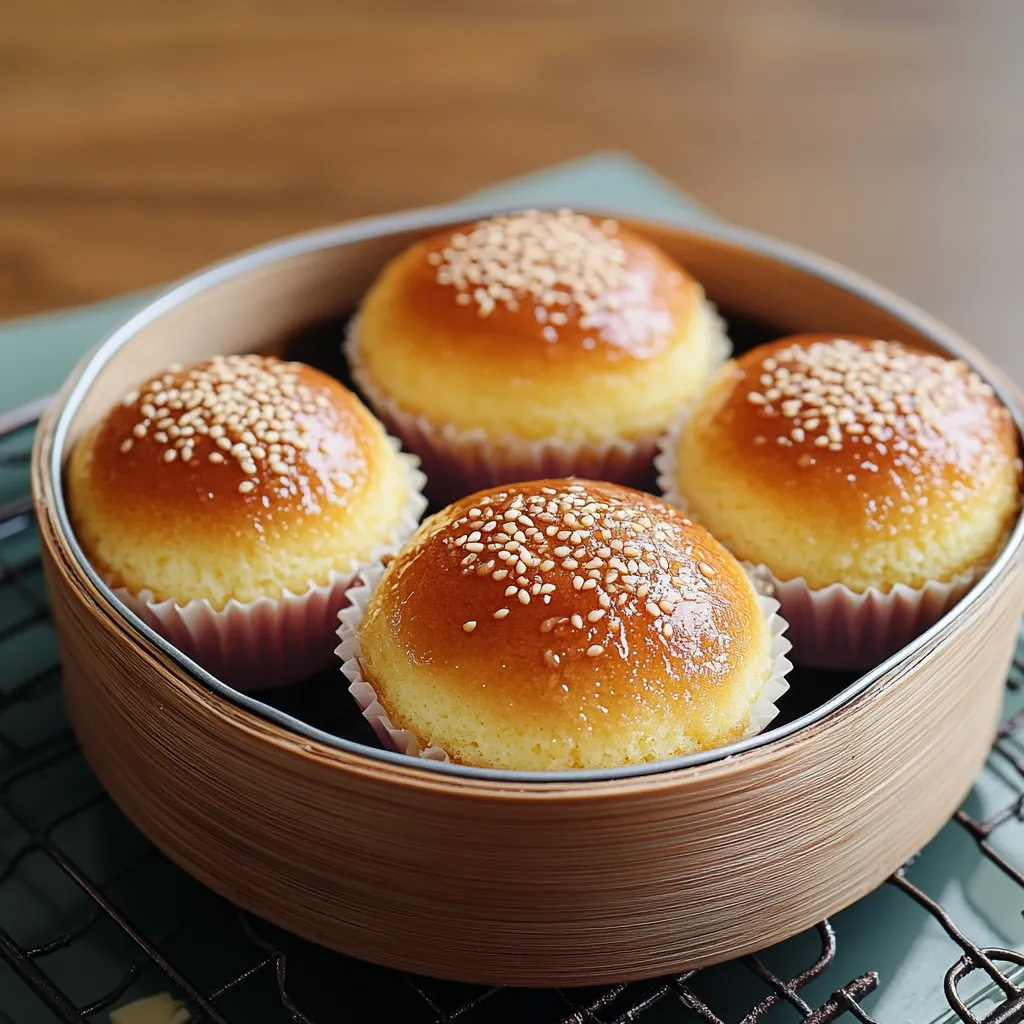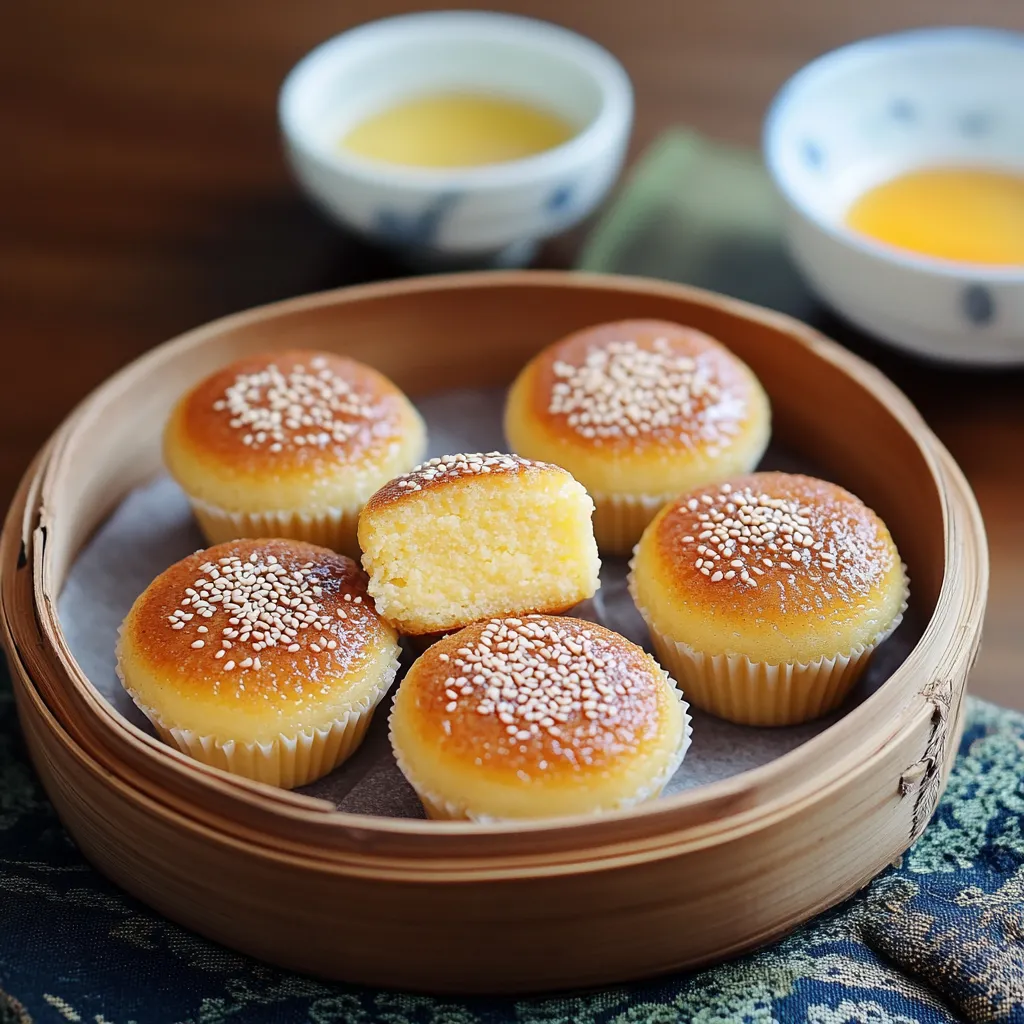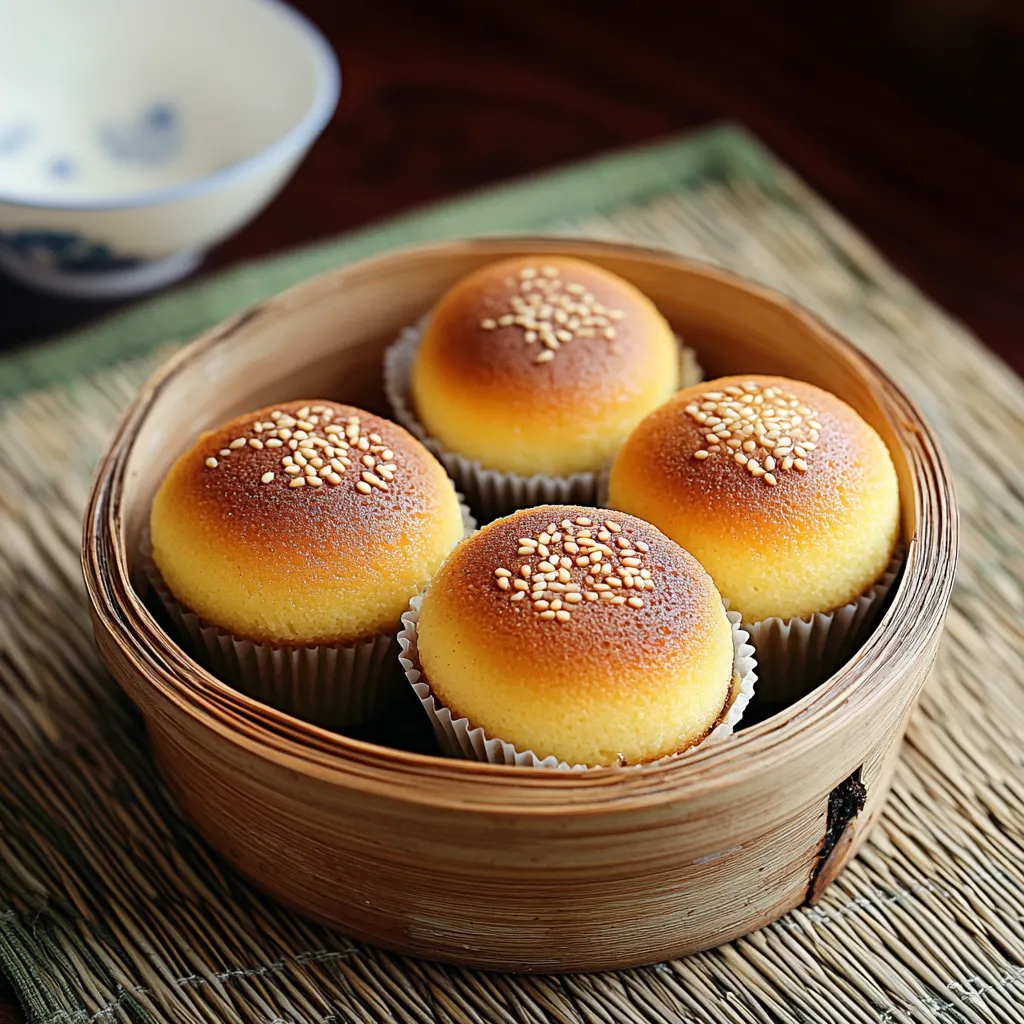 Pin it
Pin it
Classic Chinese egg cakes take you back in time with their rich, dense texture and a gentle sweetness that feels nostalgic. These small golden treats are all about simple ingredients working their magic in an unexpectedly charming way.
I remember walking into my grandmother's tiny Chinatown kitchen, always smelling that unforgettable aroma of freshly baked egg cakes. She'd pour us some jasmine tea and pass those cakes around while they were still a little toasty. When I tried making them on my own as an adult, the very first bite made it feel like I'd stepped straight back into those cherished afternoons at her table.
Irresistible Elements
- Sesame seeds: Scatter these on top for that toasted, nutty crunch and a little visual pizzazz.
- Neutral oil: This keeps things moist without hijacking the main flavor. Canola or grapeseed usually does the trick.
- Natural honey: Brings in both moisture and delicate floral flavors. Try different kinds for new twists.
- Granulated sugar: Gives just enough sweetness and helps whip up air when mixed with eggs.
- Fresh eggs: They build the structure and richness. Make sure they're at room temp so they blend in nicely.
- Cake flour: Creates that signature delicate, tender crumb. Don't forget to sift out any clumps before using unbleached cake flour.
Easy Prep Steps
- Attentive Baking
- Bake just until a gentle golden color appears, about 11-12 minutes. Cool for five minutes in the pan before transferring to a rack.
- Careful Portioning
- Pour the batter into muffin molds until they're nearly full—about 90%. Sprinkle sesame seeds up top.
- Slow Folding
- Gently drizzle in oil and keep folding. A couple extra turns with your spatula will keep big air bubbles away.
- Batter Mixing
- Whisk eggs, honey, and sugar together until they look pale and a bit thick. Fold in cake flour with a light touch so you don't squeeze all the air out.
- Get Ingredients Ready
- Sift the cake flour, let your eggs warm up on the counter, and use a greased spoon for honey so it glides right in.
- Heat Set Up
- Let your oven preheat to 325°F (163°C) for about 20 minutes. A quick swipe of oil in your muffin tin will help the cakes pop out without a fight.
 Pin it
Pin it
I learned the hard way that you can’t rush these cakes. The first batches I made tasted eggy since I couldn’t wait to dig in. My grandma got a good laugh when I called to complain. She reminded me, 'You never had patience as a kid. Just let them be till tomorrow—trust me, you’ll thank me.'
Deep Roots
This humble cake goes way back to the Qing Dynasty, showcasing how Chinese bakers first played with Western-style baking. Most old-school Chinese sweets used steam, so these oven-baked cakes really stood out. Up north, folks call them 槽子糕 (cáo zi gāo) after the baking pans. Down south they're often just named egg or honey cakes.
How to Enjoy
These are awesome with tea or simply eaten alone. Add fresh fruit, sift a little powdered sugar, or drizzle with honey if you want. They’re also amazing with poached pears or a bit of whipped cream for a touch of class. You’ll often see them with other classic sweets at holidays.
Fun Twists
If you want to shake things up, swap in some toasted sesame seeds, orange zest, or a splash of almond extract. When it’s chilly out, a tiny pinch of cinnamon or five-spice makes it feel cozy. Only add a little extra—too much and you’ll lose that special softness.
Easy Storage
Keep these cakes in a sealed container on the counter for five days. When it’s hot, stick them in the fridge and they’ll last a week. For longer storage, wrap each cake in plastic and freeze for up to three months. They’ll taste best after you thaw them in the fridge overnight.
 Pin it
Pin it
Trying foods from different backgrounds has really helped me appreciate dishes that blend flavors and traditions. These egg cakes are a great example of early fusion—simple, a bit nostalgic, and packed with history.
Frequently Asked Questions
- → What makes Chinese Egg Cake different from regular muffins or cupcakes?
- The texture of Chinese Egg Cakes sits somewhere between a soft sponge and a muffin. You beat the eggs for lift instead of baking powder, so they're a bit dense but have a gentle, eggy flavor.
- → Can I replace the cake flour with all-purpose flour?
- You can, but it'll come out firmer. Swap out 2 tablespoons of all-purpose flour from each cup and use cornstarch instead, then sift. That'll help copy the softer texture of cake flour.
- → Why do my egg cakes deflate after baking?
- Usually, that's because the eggs weren't whipped enough or your oven was too cool. Give the eggs a real good beating until soft peaks show up and heat your oven all the way before starting to bake.
- → Can I make these Chinese Egg Cakes ahead of time?
- Totally! Store them in a sealed box at room temp for a couple days or freeze for a month. Let them stand at room temp to thaw before eating.
- → What can I add to these egg cakes for different flavors?
- Try a little vanilla or almond extract. You could also mix in some citrus zest or even a spoonful of matcha to shake up the flavors.
- → Why is it important to use room temperature eggs?
- Room temp eggs puff up way more when whipped compared to cold ones. That means more bubbles in your mix and a softer cake, since you aren't using baking powder to help with the rise.
